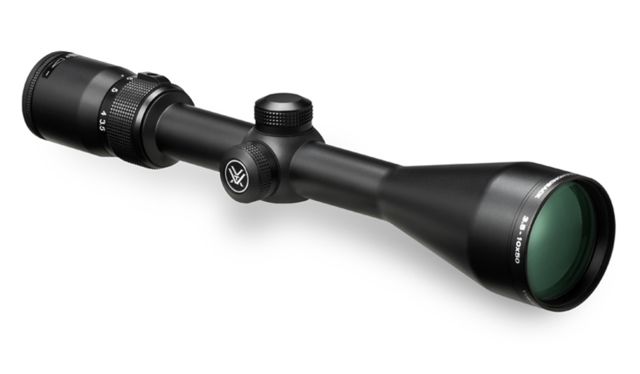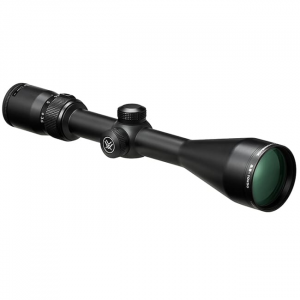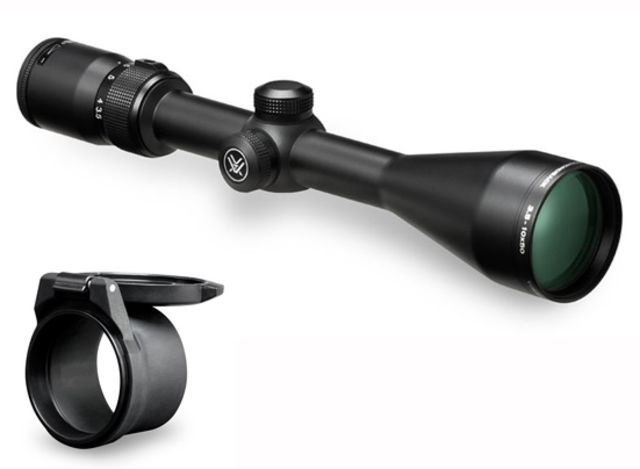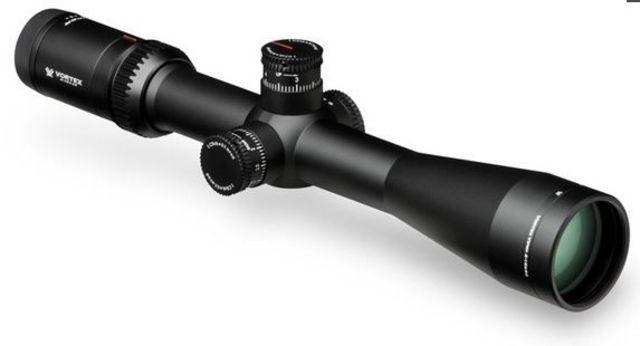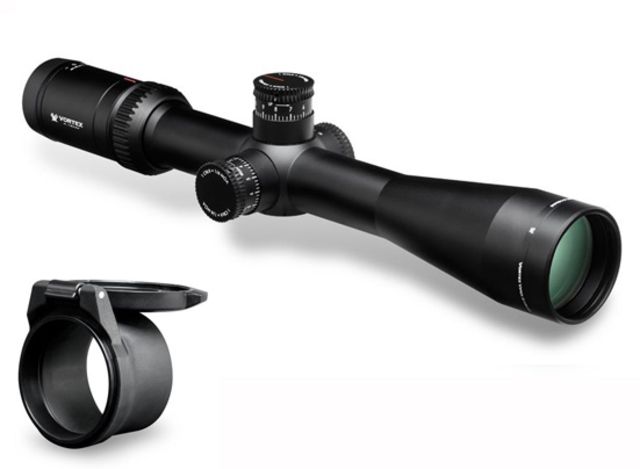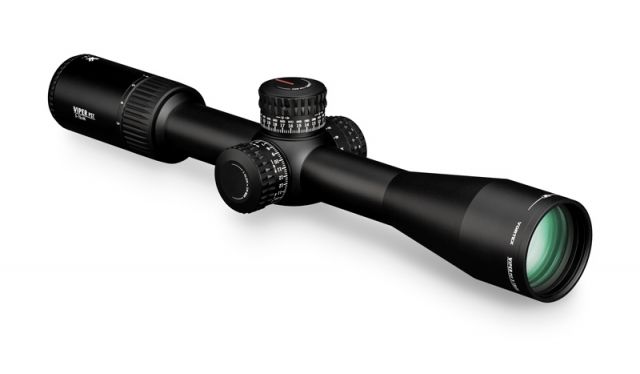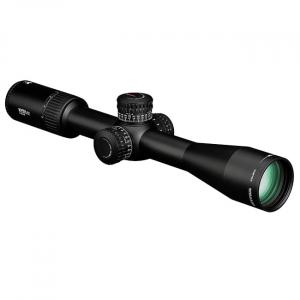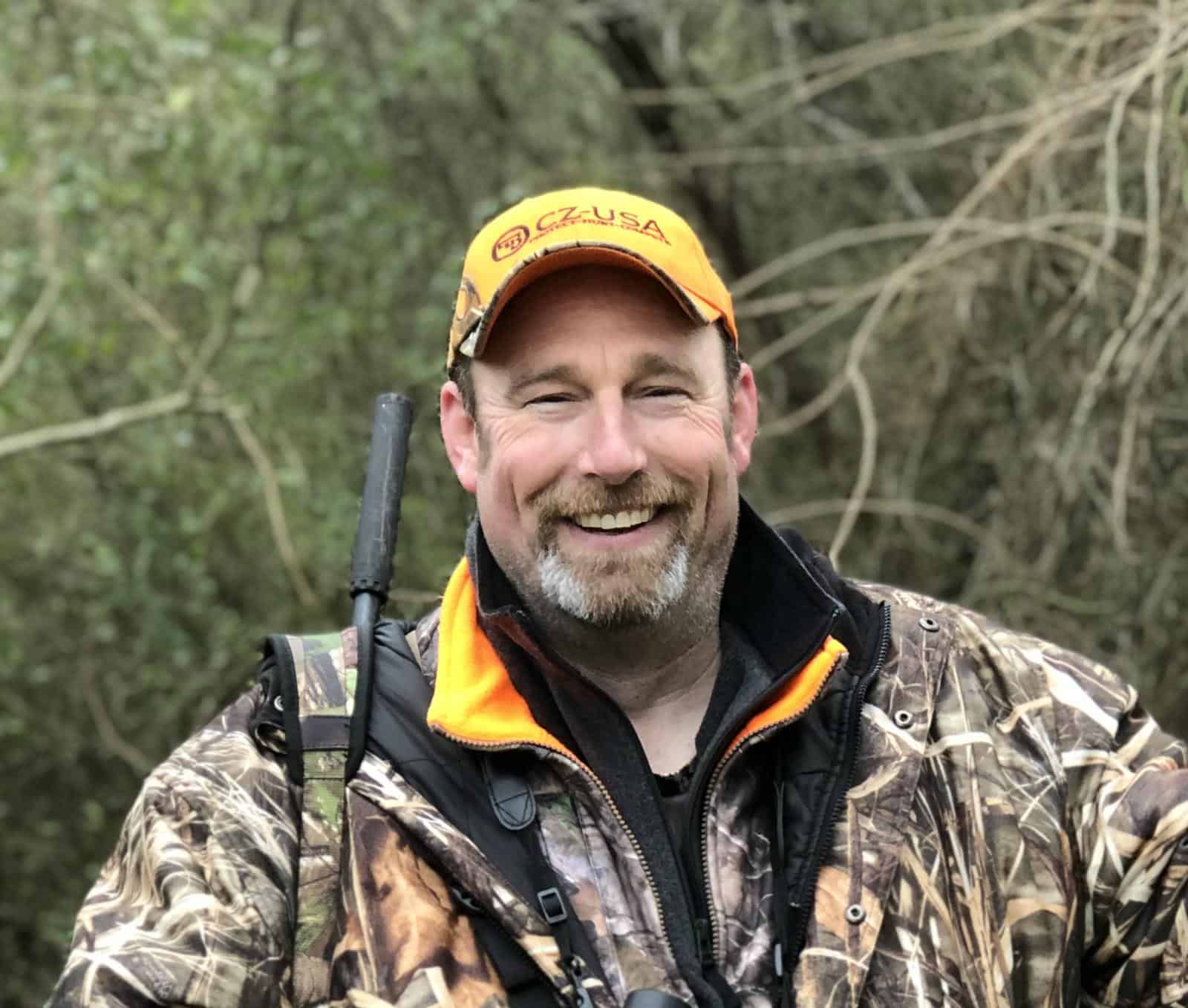As an Amazon Associate I earn from qualifying purchases. Amazon and the Amazon logo are trademarks of Amazon.com, Inc, or its affiliates.
When it comes to rifle scopes, one of the most common questions I see and hear at the gun store counter regarding Vortex Optics, is:
“What’s the best Vortex scope for hunting?”
Well, here’s the answer, and it’s kind of a long-winded one. To a point, a definitive answer will depend on exactly a number of factors, including:
- What type of game you are hunting?
- The location or region where you’ll be hunting?
- Estimated range of a shot?
- Budget
Let’s look at each potential factor individually.
Game type – The specific type of animal you are hunting will most likely play a major role in your specific choice of a Vortex scope and a specific reticle for that scope. Large game, such as whitetail deer, mule deer, bears, etc., may have a very specific Vortex scope model or models that are best suited for that game, while a hunt for smaller targets, such as Prairie Dogs, foxes, or coyotes, may require a Vortex scope more tailored for longer range shooting with a smaller reticle designed for smaller targets.
Hunting location or region – This detail becomes important as it can be an indicator of terrain, which can definitely play a role in the rifle scope selection. For example, a hunter heading for Georgia to hunt Whitetail deer in a swampy environment will probably need a rifle and scope combo that is more tailored for shorter-range shots in brushy, thick woodlands, while a hunter heading to Wyoming to hunt Mule Deer will want a rifle and scope combo that is better suited to longer range shots over more flat and open terrain.
Estimated Ranges – This factor is really hard to estimate for most hunters as the location and terrain aren’t always indicative of a specific shot range as both longer and shorter ranged shots may present themselves. For example, using the hunter heading to Georgia scenario above: that hunter might be geared for shots under 100 yards, but come upon the buck of a lifetime across a field 350 yards away. For your average shot under 100 yards, a 3-9 scope is still kind of the industry standard. But, a 3-9 would be a bit under powered for a 350 yard shot if one presented itself. So, maybe a 4-12 or 4-16 would be a little better choice as the higher power might be enough to take that 350-yard shot (if, and only if you were comfortable taking that shot in an ethical and humane manner)
Budget – Sticking to your budget on scopes is important as the costs of a good rifle scope with all the features you want, can climb fast. My advice on a budget is this: buy the highest quality scope that you can afford with the best glass, even if it means giving up a few features or even moving down in power range. In most cases, you’ll be happier with a high end 3-9 scope with good glass compared to a mid-range 4-16 with “decent” glass.
So let’s start talking scopes so we can answer the original question about the top Vortex scope models for hunting applications.
Top 5 Best Vortex Scopes for Hunting
Here’s a quick overview of my top 5 recommendations for general hunting optics within the Vortex line of riflescopes.
Optic Brand & Power Range | Image | Tube Size | Focal Plane | Reticle Options | Shop |
Vortex Crossfire II 4-12x44 | 1 inch | Second Focal Plane | Dead-Hold BDC | ||
Vortex Crossfire II 3-12x56 | 30mm | Second Focal Plane | V-Brite Illuminated | ||
Vortex Diamondback 3.5-10x50 | 1 inch | Second Focal Plane | Dead-Hold BDC | ||
Vortex Viper HST 4-16x44 | 30mm | Second Focal Plane | VMR-1 in MOA or MRAD | ||
Vortex Viper PST Gen II 3-15x44 | 30mm | Second Focal Plane | EBR-4 in MOA or MRAD |
Here’s a more in-depth look at each of my recommended scopes, along with what I like and don’t like for each model.
Vortex Crossfire II 4-12×44 with Dead-Hold BDC Reticle
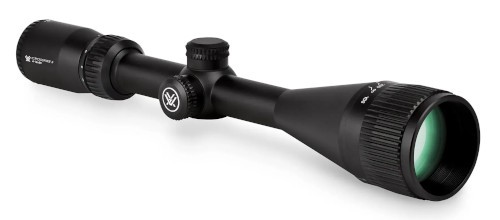
![]()
![]() The Vortex Crossfire II series is really marketed as a higher-end entry-level rifle scope that is geared towards hunting. Vortex offers the Crossfire II series in 14 or 15 different power and reticle magnifications, so the series covers nearly every hunting scenario that one might encounter.
The Vortex Crossfire II series is really marketed as a higher-end entry-level rifle scope that is geared towards hunting. Vortex offers the Crossfire II series in 14 or 15 different power and reticle magnifications, so the series covers nearly every hunting scenario that one might encounter.
The 4-12×44 model with the Dead-Hold BDC offers enough power range to handle both short and long range hunting scenarios, and the BDC reticle also gives a shooter the ability to reach out a little farther if needed. With some practice and understanding of how the rifle caliber performs at longer ranges, the BDC-based reticle can give a hunter the confidence and capability to make some shots out past the 200-yard and over range.
The 44mm bell means that the scope can be mounted closer to the rifle (as opposed to a 50mm bell) and makes the scope more lightweight.
If your scope budget is $250 or less, then the Crossfire II 4-12×44 with BDC reticle is one to check out.
Vortex Crossfire II 3-12×56 with a V-Brite Illuminated MOA Reticle
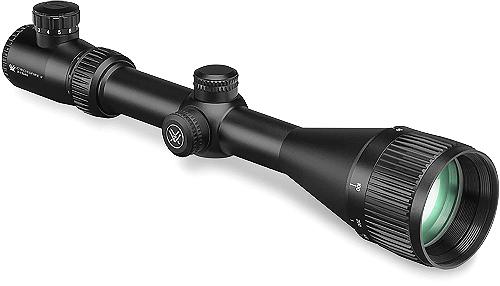
![]()
This is another Vortex Crossfire II scope that is a good option for hunting, especially in shorter-range situations with heavy cover. The illuminated reticle, coupled with the larger 56mm ocular bell, makes this Vortex scope ideal for low light hunting scenarios. The 3-12 power range offers the advantage of 3X more power versus the “standard” 3-9 powered scope.
While the illumination feature adds a few extra ounces of weight, I find the benefits worth it for low light hunting situations. Now, the larger than normal 56mm ocular bell means that you’ll need rings that are a little bit higher than normal, but the 56mm bell pulls in much more light than a smaller 44mm bell.
While I’ve found almost all the Vortex scopes to be very durable, I found this particular Vortex scope model to be built like a tank. If there’s one downside to this model, it’s the fact that this model weighs 12.1 ounces, which is slightly more than most scopes in this power range. Keep in mind, that the additional weight is tied to the illumination and the larger 56mm bell, which I find to be worth the heavier weight. A few ounces here and there between the different scope models doesn’t sound like much weight on paper, but you’ll feel that weight at the end of a long day of hunting.
Vortex Diamondback 3.5-10×50 with Dead-Hold BDC
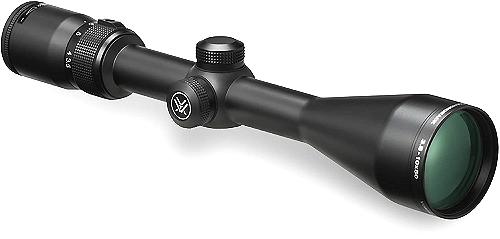
If you wanted to take a step up from the Vortex Crossfire II series, then the next Vortex model I’d suggest for hunting would be the Vortex Diamondback 3.5-10×50 with the Dead-Hold BDC reticle. If I had to come up with one word to describe this scope model, it would be “versatile”. This version of the Diamondback has enough magnification power to work for nearly any type of hunting, from big game to varmint hunting, to being mounted on a blackpowder rifle.
A common question about the Diamondback series is what makes it better than the Crossfire II series. The Diamondback series of scopes offers slightly better glass quality compared to the Crossfire II series, which equals a slightly higher price tag. Aside from the slight upgrade in glass quality, they are pretty darn similar.
If you have the budget for it, this Diamondback model would certainly be one to consider for most hunting scenarios.
Vortex Viper HST 4-16×44 with VMR-1 (MRAD) Reticle
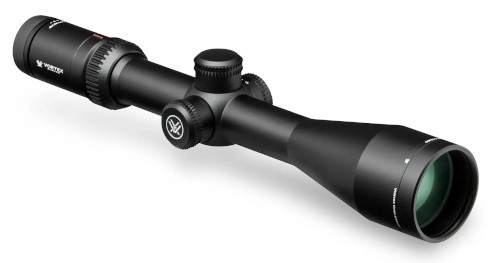
![]() The Vortex Viper HST scope series is another jump up from the more entry-level Vortex lines as the Viper HST is really geared to mid to long-range shooting. The HST model with a 4-16×44 power range and the patented VMR-1 reticle offers a hunter some serious long range functionality. The Viper HST series is a merger of sorts between the Vortex PST scope series and the Vortex Viper HS scope series.
The Vortex Viper HST scope series is another jump up from the more entry-level Vortex lines as the Viper HST is really geared to mid to long-range shooting. The HST model with a 4-16×44 power range and the patented VMR-1 reticle offers a hunter some serious long range functionality. The Viper HST series is a merger of sorts between the Vortex PST scope series and the Vortex Viper HS scope series.
The end result is a 30mm scope with exposed turrets mated to a versatile reticle that is best suited to open range or more long range hunting. Now, the HST series can and would work for more short range hunting situations, but Vortex offers other reticle options that are really better suited for those shorter ranges. Now, to be honest, if you’re more comfortable with a traditional duplex reticle set-up, this HST scope in 4-16×44 might not be the best choice for you as the only reticle options currently offered are the VMR-1 in either MRAD or MOA.
Hunting situations where the Viper HST model shines are long range predator hunting, or mid-to-long range big game hunting. If the 4-16×44 version of the Viper HST doesn’t offer enough power magnification for you, Vortex also offers it in a 6-24×50 variant.
Vortex Viper PST Gen II 3-15×44 with the EBR-4 Reticle
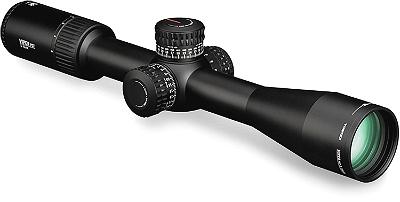
![]()
![]() If the Viper HST line of Vortex scopes isn’t quite enough glass or magnification power for you, then the next model I’ll suggest for hunting would be the Viper PST Gen II model with the EBR-4 reticle. Now from a price standpoint, there’s a pretty good jump in costs with the PST Gen II series.
If the Viper HST line of Vortex scopes isn’t quite enough glass or magnification power for you, then the next model I’ll suggest for hunting would be the Viper PST Gen II model with the EBR-4 reticle. Now from a price standpoint, there’s a pretty good jump in costs with the PST Gen II series.
So why the jump in costs with this model? Because this model offers an etched reticle, an illuminated reticle with up to 10 different levels of illumination, a higher quality of glass, and a zero stop. However, to be honest, this series of scopes is also really geared more towards the longer ranges hunting scenarios at the reticle options are either MOA or MRAD based.
The PST series of scopes is available in a wide range of power magnifications that go as low as 2-10×32 models all the way up to 5-25×50 models, so there’s a Vortex PST configuration for most any hunting situation. Again, if you prefer a more simplified reticle like a traditional duplex, then I’d suggest taking a look at the Vortex Crossfire II or Diamondback scope models. I recommend the 3-15 PST model because the power range is enough to perform well in most hunting situations, but not so powerful as to overwhelm the hunter on shorter range shots. And the side focus goes all the way down to 20 yards, which is more than ideal for those really close range encounters.
If I had one issue with the PST model, it’s the lack of a more simplified reticle system. I get that this scope series is really designed to target the long range side of things, but a more basic reticle option would open this series up to a broader segment of the hunting market. Some customers are going to be drawn towards the higher quality glass, without the illuminated reticle, zero stop, etc.
The five Vortex scope models listed above are really the “best” options for most hunting scenarios or situations. While Vortex offers several higher-end rifle scope models that are more expensive than any listed on this page (like the Golden Eagle series or the Razor series), those models and series are focused on a more long-range part of the shooting market. In some cases, scopes designed for extreme long range shooting (say over 1000 yards) are so specialized in design, reticles, and power ranges, that they become overkill for typical hunting needs.
For example, in my day job at a large gun store, I was recently helping a customer get outfitted for an upcoming mule deer hunt in Wyoming. The customer had already purchased a very nice Weatherby Mark V rifle in .270 and was looking to buy a scope for it.
He was interested in the Vortex line, so he and I went over all the different Vortex scope offerings that we carry (which is basically the entire line). He was drawn to the Vortex PST GEN II model in the 5-25×50 with the EBR-2 MOA reticle.
However, that specific PST is an FFP model (First Focal Plane), and he wasn’t really familiar with the concept of an FFP scope or understood how the MOA reticle functioned. As we kind of peeled away the layers of why he was drawn to that specific scope model, it became apparent that he:
- Liked the power range thinking more was always better
- Liked the illuminated reticle
I understand the attraction of both of those features, but, IMHO, and based on his experience level, there were better (and less expensive) options in the Vortex scope line compared to the PST series.
Now, I’m not one to tell people how to spend their money, so, in the end, he walked out of the store with that PST 5-25×50, which was really probably overkill for his specific situation.
Final Thoughts
In my opinion, the five Vortex optics listed above are my top suggestions for a general hunting scope. However, if you read enough Vortex scope reviews, you’ll likely come across some semi-negative reviews of the Vortex optics listed above. This is not uncommon as it’s nearly impossible to please everyone.
The suggested models above offer a nice blend of magnification power with reticle options that perform well in most hunting scenarios. I’ve also tried to take budget into account as the optics featured above also cover a wide range of costs.
I’ve been working in the firearms and sporting optics industry for over 20 years, with a personal and professional interest in all things related to rifle scopes, Through a combination of work experience, formal training, and personal experiences, I have extensive experience mounting, testing, and evaluating different rifle scope models across most major optical brands.
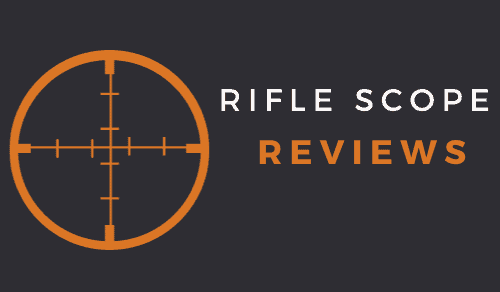
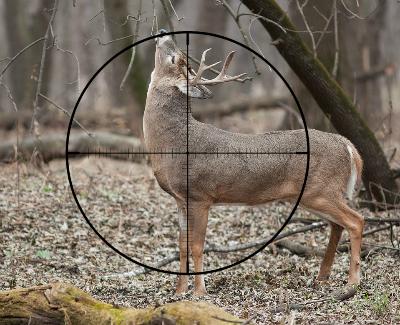






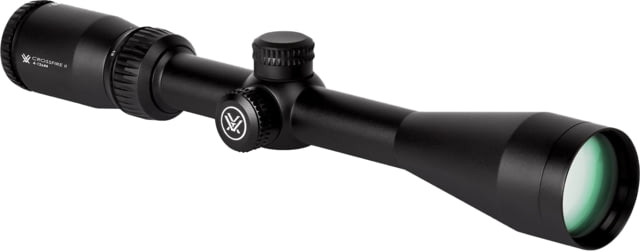
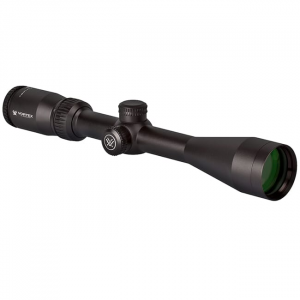
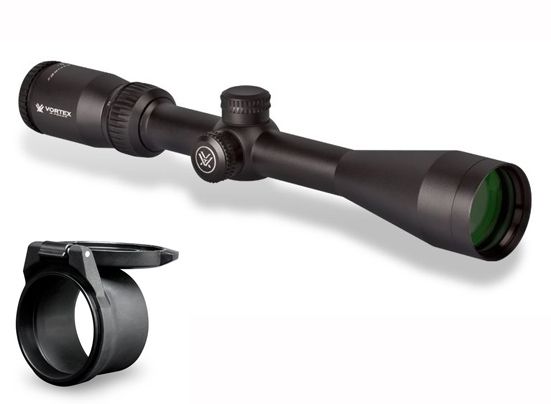

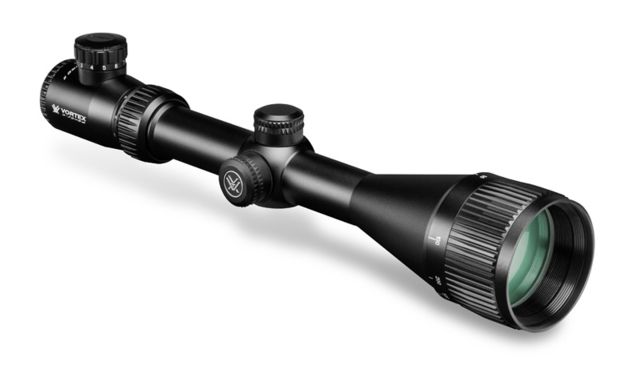

))/4159595.json?$BPSMkt_ProductFeeds$&extend=380,380,380,380)

